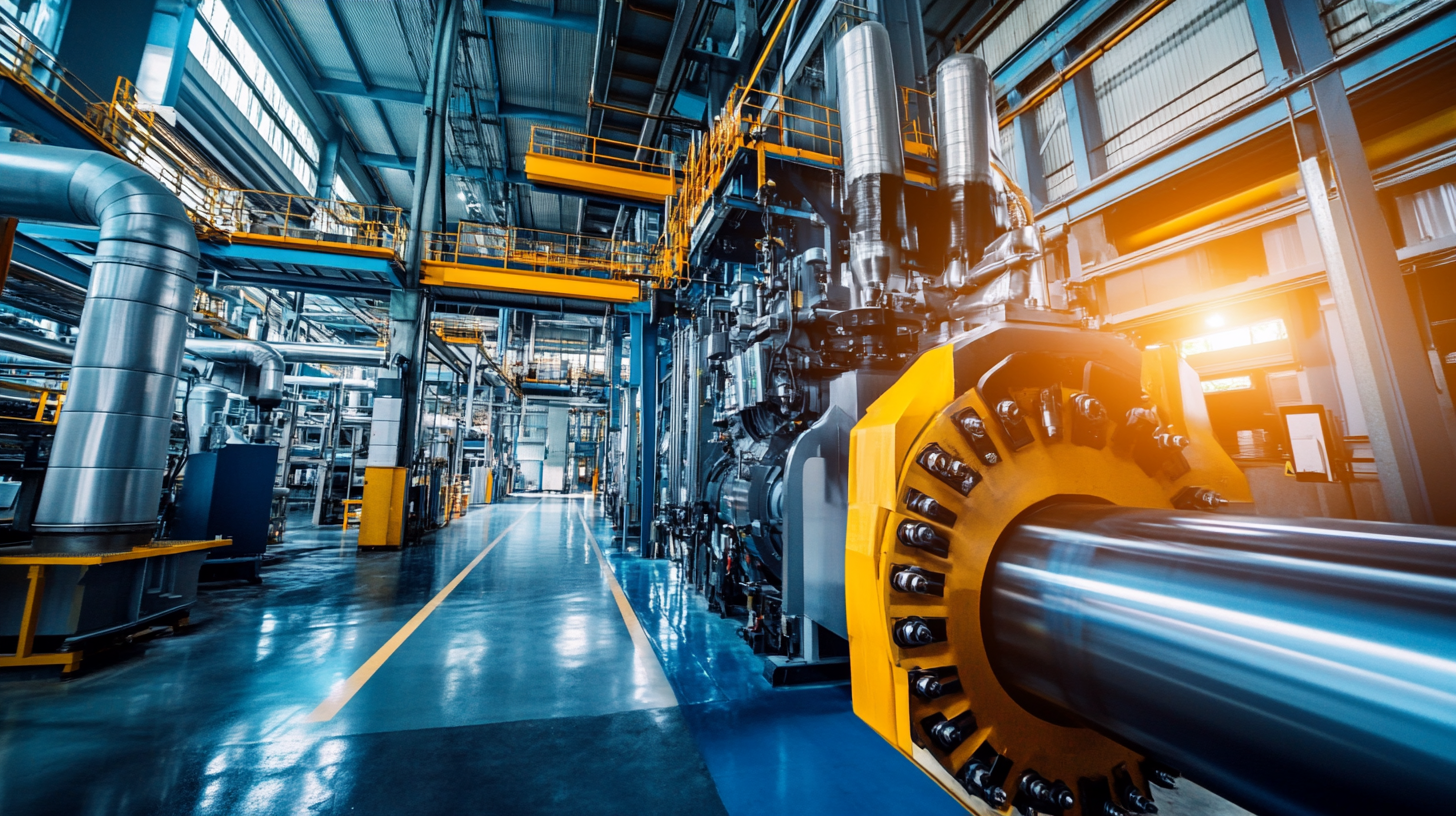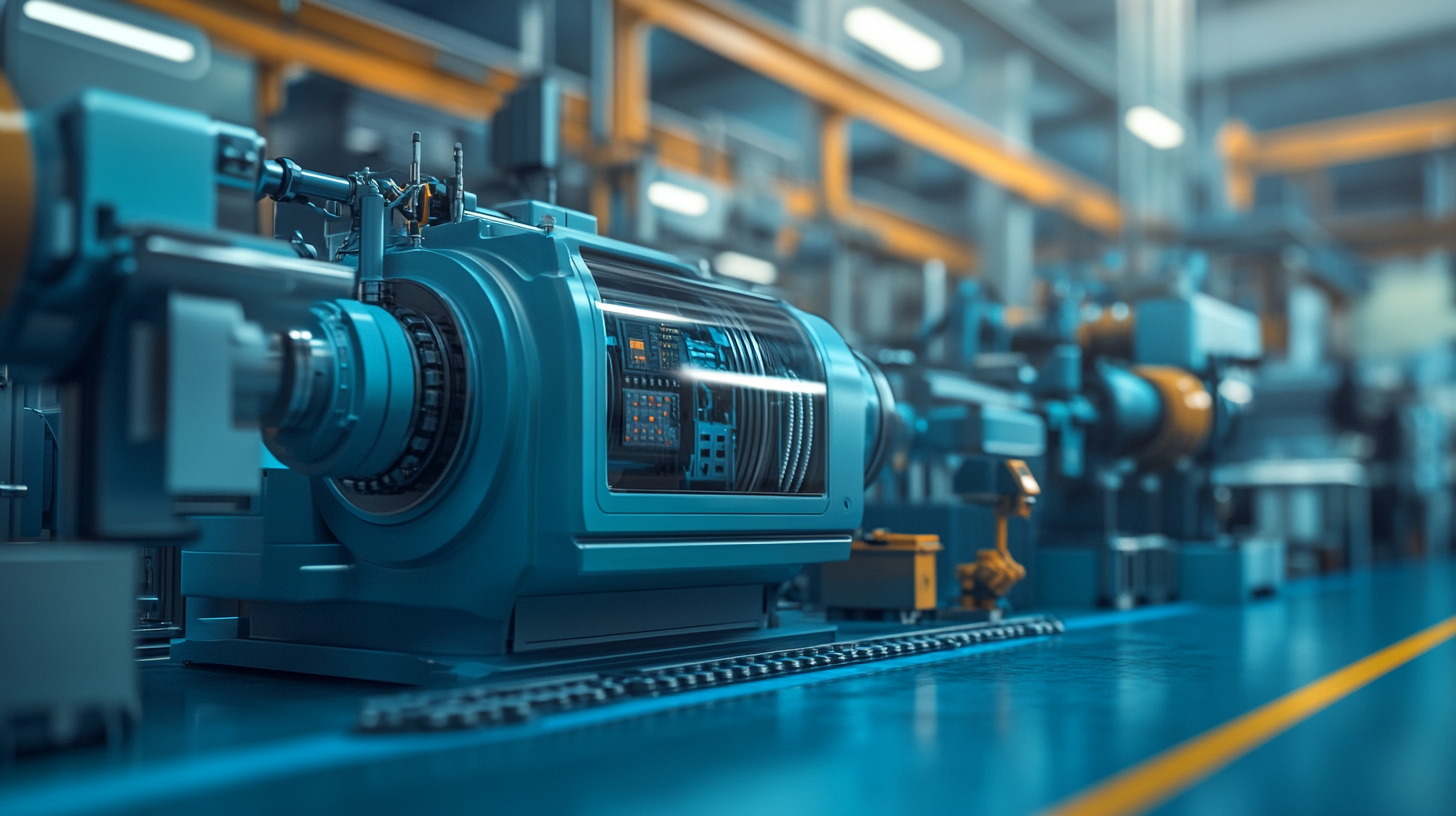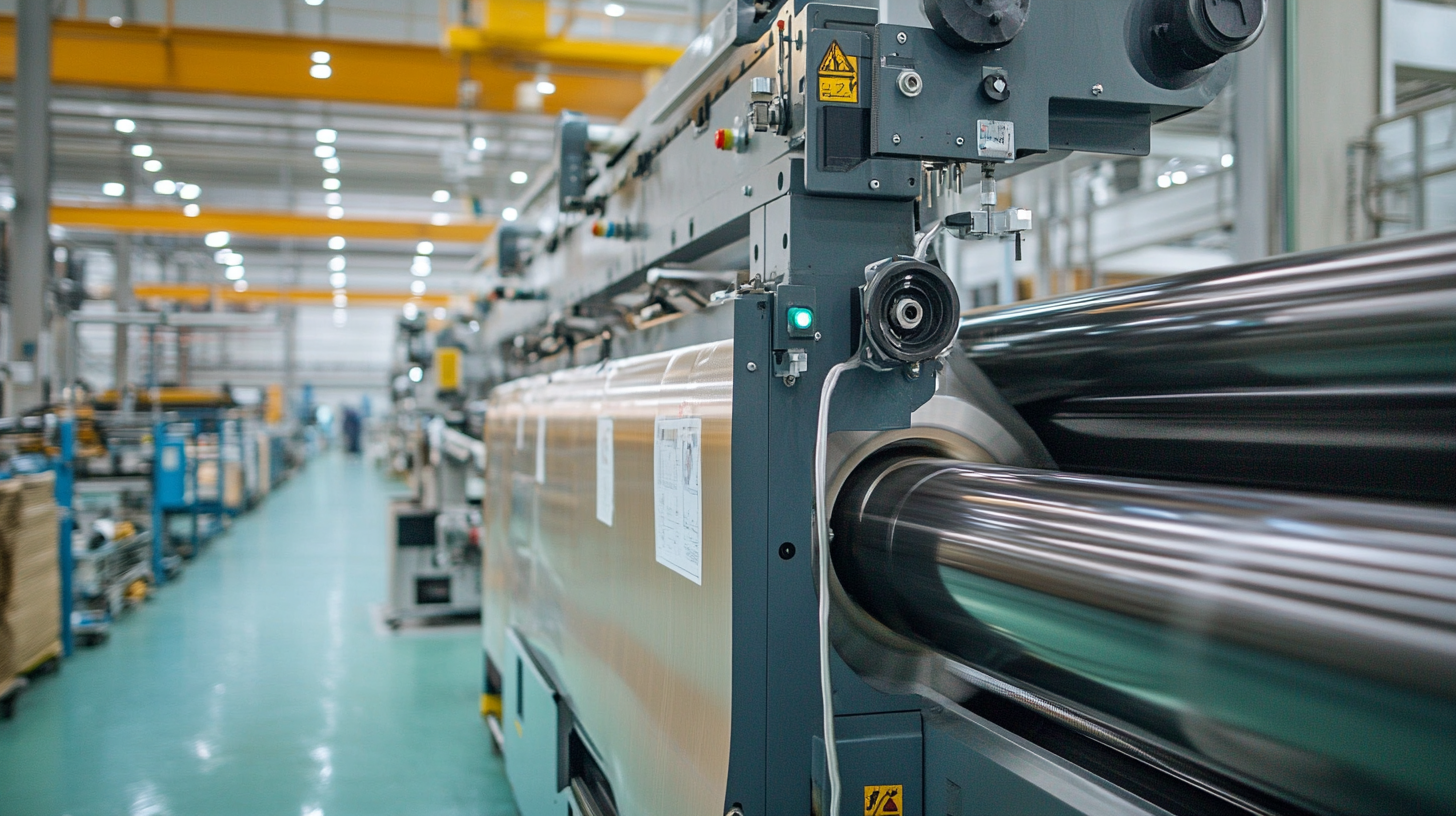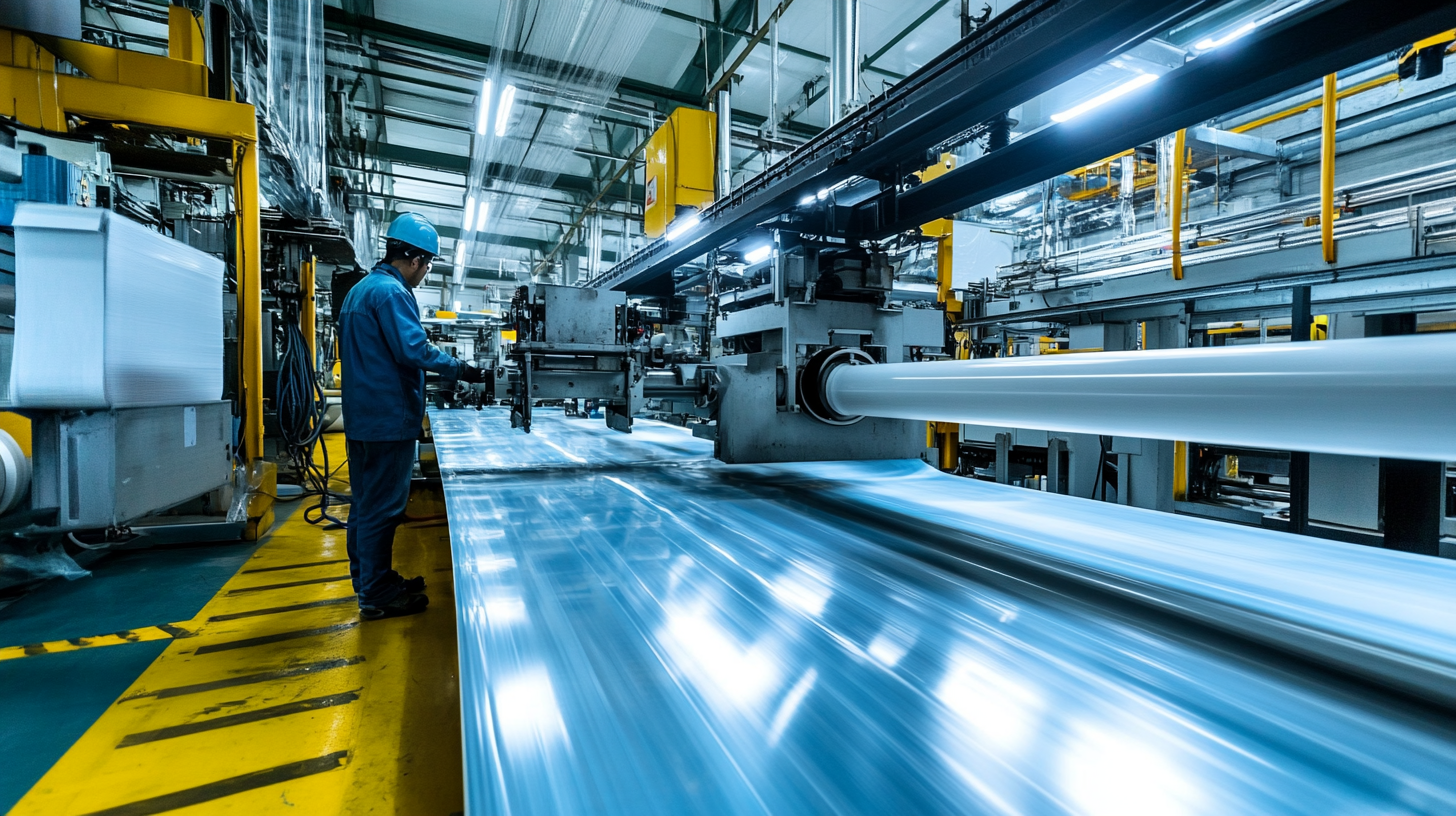Essential Factors to Consider When Evaluating Pvc Machinery for Your Production Needs
When considering the procurement of PVC machinery for your production needs, it is vital to understand the essential factors that can significantly impact your operational efficiency and product quality. According to a report by ResearchAndMarkets, the global PVC market is projected to exceed USD 100 billion by 2025, driven by its extensive application across various industries such as construction, automotive, and packaging. As this demand grows, investing in advanced PVC machinery becomes crucial for manufacturers seeking to enhance their productivity and reduce operational costs.
Evaluating PVC machinery involves more than just comparing prices; it requires a thorough analysis of technology, material compatibility, and overall production capabilities. A study conducted by Transparency Market Research indicates that innovations in PVC processing, such as extrusion and injection molding technologies, are essential in meeting the ever-increasing performance standards. By carefully assessing these factors, companies can align their machinery choices with their production goals, ensuring they remain competitive in a rapidly evolving market.

Key Specifications to Assess for PVC Machinery Efficiency
When evaluating PVC machinery for production needs, it's crucial to focus on key specifications that determine efficiency and output. First and foremost, consider the machinery's production capacity. This factor will directly influence the overall productivity of your operation. Stated in terms of output per hour, high-capacity machines can drastically reduce manufacturing time and labor costs, making it essential to choose equipment that meets your production demands. Another important specification to assess is the machine's energy consumption. Efficient machines not only contribute to reducing operational costs but also align with sustainable practices. Look for technologies that offer energy-saving features while maintaining performance levels. In addition to energy efficiency, the versatility of the machinery should also be evaluated. The ability to process different types of PVC formulations and adapt to various production runs can enhance flexibility, allowing the operation to respond swiftly to market changes. Furthermore, the technology used in the machinery plays a significant role in its effectiveness. Advanced features such as automation, real-time monitoring, and user-friendly interfaces can enhance productivity by minimizing human error and downtime. Investing in machinery that integrates modern technology ensures your production line remains competitive and capable of producing high-quality PVC products consistently.

Understanding Different Types of PVC Machinery and Their Applications
When selecting PVC machinery, it is crucial to understand the various types available and their specific applications to optimize your production process. One of the most common types of PVC machinery is the extrusion machine. This equipment is essential for producing continuous profiles, pipes, and sheets made from PVC. Extrusion offers flexibility in designing different shapes and sizes, making it particularly valuable for businesses that require customized products. The process involves melting PVC pellets, which are then forced through a die to create the desired form, ensuring high efficiency and consistent quality.
Another important category of PVC machinery is the injection molding machine. This type of machinery is widely used for manufacturing intricate shapes and components from PVC by injecting molten plastic into molds. Injection molding is particularly advantageous for producing high volumes of precise parts, such as fittings, boxes, and various consumer goods. Its capability to create complex geometries with minimal waste makes it an attractive option for manufacturers focused on sustainability and cost-effectiveness.
Additionally, there are specialized machines like PVC blow molding equipment, which is used for producing hollow objects such as bottles and containers. This technique relies on air pressure to expand the softened PVC material against the mold, allowing for the creation of lightweight and durable items. Understanding the unique features and applications of these different PVC machines can help manufacturers make informed decisions based on their specific production needs, leading to enhanced efficiency and product quality.

Critical Factors for Evaluating the Durability and Maintenance of Machinery
When investing in PVC machinery for production, durability and maintenance should take center stage in your evaluation. Assessing durability begins with understanding the materials used in the machinery's construction. Machines made with high-quality components not only withstand operational strain but also reduce the likelihood of early wear and tear. Look for features such as corrosion-resistant materials and robust frames designed to endure heavy usage. A thorough analysis of the manufacturer’s reputation and the technology employed can provide insights into the longevity you can expect from the machinery.
Maintenance is equally critical in determining the overall cost-effectiveness of your machinery investment. It's essential to inquire about the accessibility of spare parts and the complexity of maintenance procedures. Machinery that is easy to maintain can save substantial downtime and avoid costly repairs. Consider machines with built-in diagnostic tools or user-friendly interfaces that facilitate troubleshooting. Additionally, understanding the manufacturer’s support services, such as availability of training and maintenance resources, can significantly enhance the operational efficiency and lifespan of your PVC machinery. By prioritizing both durability and maintenance factors, you can ensure a reliable production process that meets your business’s long-term needs.

Cost Analysis: Balancing Initial Investment with Long-Term Benefits
When considering PVC machinery for your production needs, a thorough cost analysis is essential. The initial investment for PVC machinery can be substantial, but understanding the long-term benefits can greatly influence your decision. Just like evaluating investments in environmental adaptation or education, weighing the upfront costs against future savings and revenue potential is crucial. The machinery's durability, efficiency, and automated features can lead to significant reductions in operational costs over time, making them a financially sound choice.
It's also important to factor in the scalability of the machinery. As production demands grow, having equipment that can adapt to increased volumes without requiring frequent replacements can eliminate additional costs. Similar to the concept of dollar-cost averaging in investment strategies, adopting PVC machinery that balances initial expenses with sustained productivity gains can provide stability and ensure a profitable return on investment in the long run.
Additionally, the benefits of investing in high-quality machinery extend beyond mere cost savings. Improved efficiency can enhance product quality and consistency, directly impacting your competitive edge in the market. This aligns with the overarching principle of making informed investments that yield significant returns, just as in other economic scenarios where careful financial planning leads to rewarding outcomes. Investing wisely in PVC machinery not only supports immediate production needs but also paves the way for enduring success in your manufacturing endeavors.
Technology Trends: How Innovation Influences PVC Machinery Selection
As the demand for PVC is continuously rising across various industries, the innovation surrounding PVC machinery has grown tremendously. Modern technology trends are shaping how manufacturers select their machinery, ensuring efficiency, precision, and sustainability. Integrating advancements such as automation and smart technology allows for greater control over production processes. Manufacturers are now leaning towards machinery that not only meets their immediate production needs but also adapts to future requirements.
One significant trend is the increasing use of Industry 4.0 principles in PVC machinery. Equipment that incorporates IoT (Internet of Things) capabilities can provide real-time data analytics, allowing producers to monitor performance and identify areas for improvement swiftly. This level of connectivity helps in reducing downtime and optimizing maintenance schedules. As machinery becomes more intelligent, it can also help in minimizing material waste, making it a more environmentally friendly option in the long run.
Furthermore, advancements in energy efficiency are influencing machinery selection. With a growing emphasis on sustainability, manufacturers are now prioritizing machinery that utilizes less energy while maintaining high productivity levels. This shift not only aligns with global environmental goals but also significantly reduces operational costs. As innovation continues to dictate the landscape of PVC machinery, companies must stay informed and make strategic decisions to remain competitive in the market. The choices made today will ultimately define the efficiency and sustainability of production processes tomorrow.


